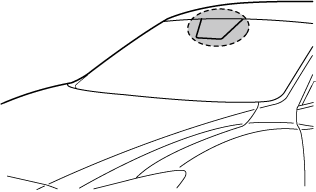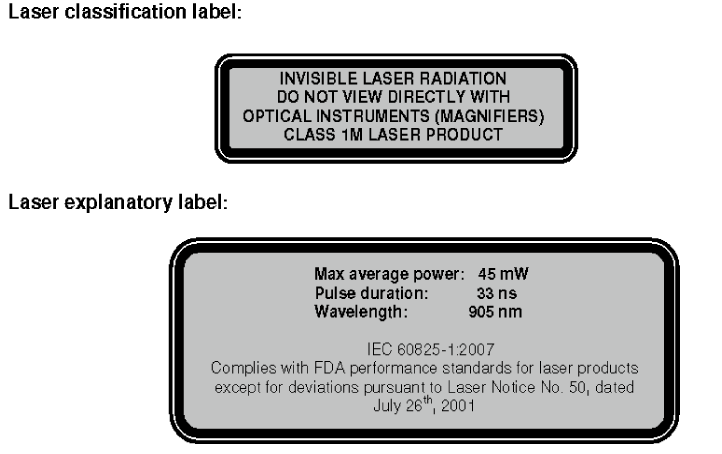Laser Sensor (Front) (Some Models)
Your vehicle is equipped with a laser sensor (front). The laser sensor (front) is positioned near the rearview mirror and used by the following systems.
-
Smart Brake Support (SBS)
-
Smart City Brake Support [Forward] (SCBS F)

Heed the following precautions to assure correct operation of the system.
-
Keep the windscreen clean at all times.
-
Do not apply stickers to the surface of the windscreen (including transparent stickers).
-
If cracks or damage caused by flying gravel or debris is visible near the laser sensor (front), stop using the system immediately and have your vehicle inspected by an Authorised Mazda Repairer.
Refer to the Personalisation Features (Search) on how to turn off the system.
-
Do not apply a coating agent to the windscreen.
-
When replacing the windscreen wipers or windscreen, consult an Authorised Mazda Repairer.
-
Never remove the sensor.
-
A removed sensor will not meet the conditions for a class 1M laser under the IEC 60825-1 specification and therefore eye safety cannot be assured.
-
Do not peer into the sensor using optical instruments with a magnification function such as magnifying glasses, and microscopic and objective lenses within a distance of 100 mm (3.94 in) from the sensor.



Laser sensor radiation data
Maximum average power: 45 mW
Pulse duration: 33 ns
Wavelength: 905 nm
Divergence angle (horizontal×vertical):28 degrees×12 degrees
-
In the following cases, the laser sensor (front) cannot detect vehicles ahead correctly, and each system may be unable to operate normally.
-
The windscreen is dirty.
-
Elongated luggage or cargo is loaded onto installed roof rails and covers the laser sensor (front).
-
Exhaust gas from the vehicle in front, sand, snow, and water vapour rising from manholes and grating, and water splashed into the air.
-
-
If there are recognizable cracks or damage caused by flying gravel or debris on the windscreen, always have the windscreen replaced. Consult an Authorised Mazda Repairer for replacement.




 Read this first
Read this first



















